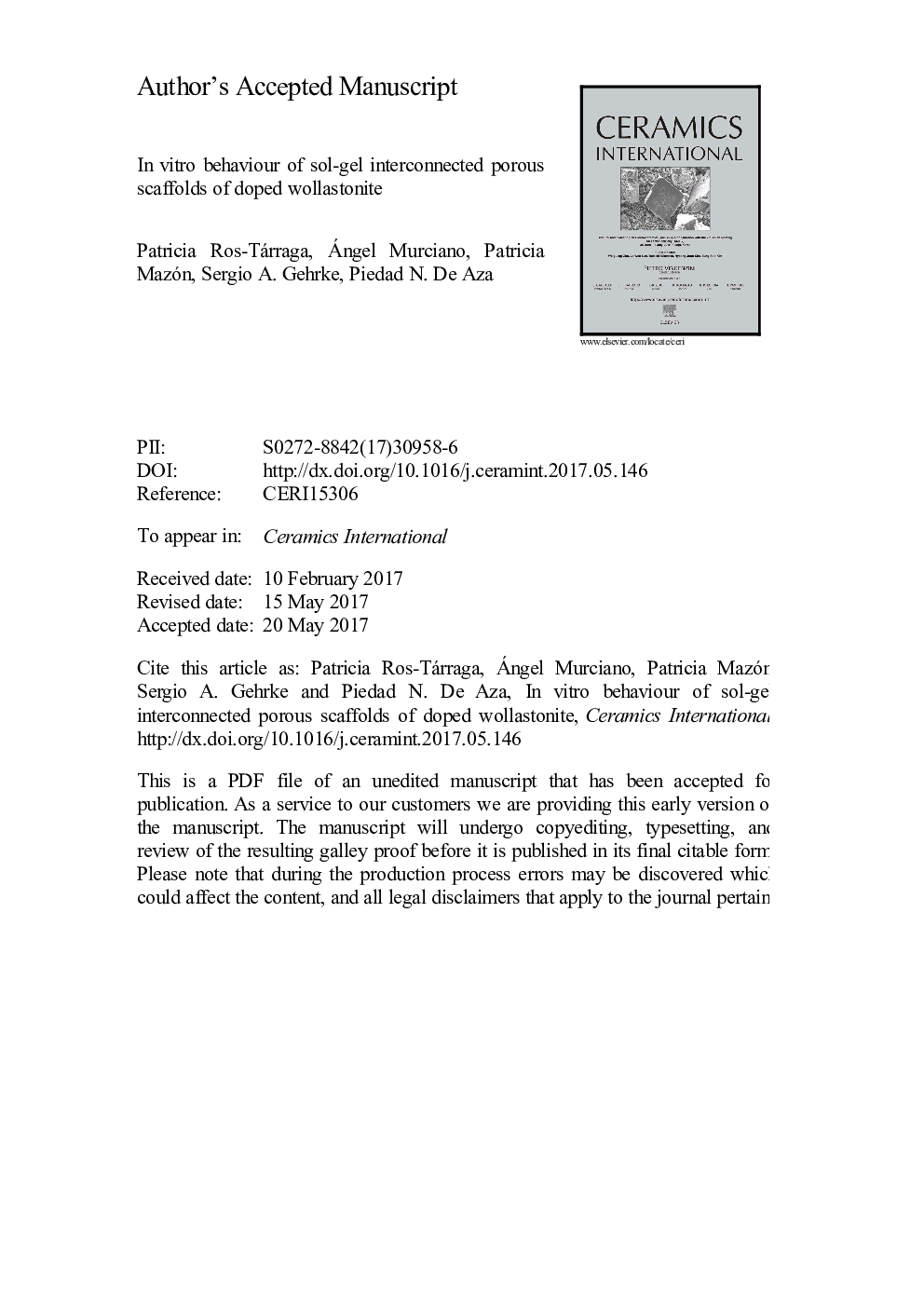| Article ID | Journal | Published Year | Pages | File Type |
|---|---|---|---|---|
| 5438052 | Ceramics International | 2017 | 21 Pages |
Abstract
Using the sol-gel method, two different three-dimensional (3D) porous interconnected scaffolds were prepared, whose compositions were MgO-K2O-CaO-SiO2 (MgO-K2O-wollastonite) and Na2O-K2O-CaO-SiO2 (Na2O-K2O-wollastonite). Scaffold sintering was performed at 950 °C for 8 h. The scaffolds were obtained and soaked in simulated body fluid for different times (6 h, 3 d, 7 d and 14 d) to study their in vitro behaviour. Scanning electron microscopy and energy-dispersive X-ray spectroscopy revealed the presence of both a hydroxyapatite-like microstructure and a nanostructure on the surface of 3D scaffolds. The presence of Na and K in the scaffolds resulted in the precipitation of a hierarchical hydroxyapatite-like layer composed of nanorods, approximately 200-400 nm in size. The presence of Mg and K ions in the composition caused the precipitation of particles with a nanorod morphology, approximately 50-100 nm in size. The addition of Na, K and Mg, K to the wollastonite resulted in scaffolds with mechanical strengths of 0.03 and 0.02 MPa, respectively.
Related Topics
Physical Sciences and Engineering
Materials Science
Ceramics and Composites
Authors
Patricia Ros-Tárraga, Ángel Murciano, Patricia Mazón, Sergio A. Gehrke, Piedad N. De Aza,
